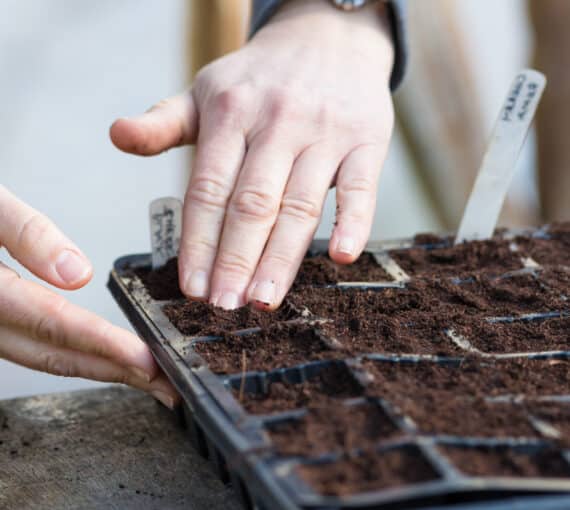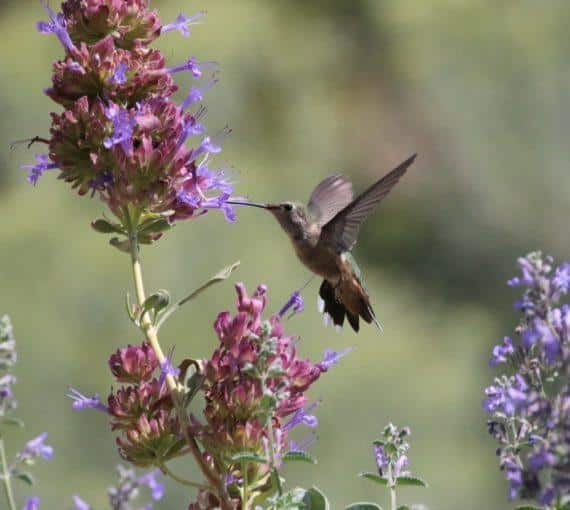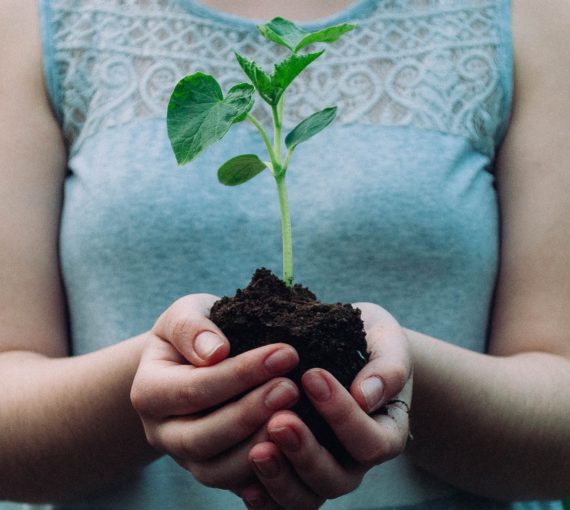
Mount Robson is surrounded by wildflowers in spring and summer. Standing tall is lupine, a native to British Columbia. (Photo: Roger Smith via Flickr )
What may seem like a small contribution — a tiny flowerpot or garden patch of native wildflowers — can provide valuable habitat for British Columbia pollinators such as hummingbirds, bees and butterflies.
Native wildflowers are adapted to local climate and soils and require less care and watering once established. They provide sugar-filled nectar and protein-rich pollen for beneficial insects such as local butterflies and wild bees. Always try to find local sources for native plants.
Pollinators in B.C.
B.C. has 500 species of wild bees. Agriculture contributes more than $538 billion to the province’s economy, and none of it would be possible without pollinators.
It’s important to understand the impact pollinators have on nature and the economy. They maintain biodiversity, support plant reproduction and provide many other ecological services.
All pollinators have a vital, often overlooked role in our economy. By pollinating many crops humans consume and trade, they’re essential to maintaining our food security. Scientists estimate that approximately 75 per cent of the world’s flowering plants and 35 per cent of global food crops depend on animal pollinators to produce.
To thrive, pollinators need food and shelter. Help them support you — create a pollinator paradise!
How to get started
Find your ecoregion’s native plants and wildflowers
Planting native plants and wildflowers supports local pollinators that have evolved to depend on those species for food and habitat.
Source native seeds and plants
Seeds can be organic (grown without synthetic fertilizers and pesticides), non-GMO (cultivated through pollination, not in a lab), open-pollinated (pollinated by nature e.g., insects, birds, wind, humans), heirloom (with an open-pollinated heritage) and rare. Locate native plants in local nurseries!
Start a pollinator paradise
A manicured lawn is not pollinator friendly. But a yard, community garden, patio or window box filled with native plants can be a pollinator paradise.
Why choose native plants and wildflowers?
Native plants and wildflowers have evolved in this climate for generations. By creating a naturescape (native plant garden), you’ll help solve pollinator habitat loss. By avoiding expensive fertilizers and toxic pesticides, you’ll save time and money.
Native wildflowers and plants of B.C.
B.C. has the most ecoregions in Canada, each with distinct climate, geology and landforms. With such diversity, the province hosts many rare and unique species — some found nowhere else in the world!
For example, spotted saxifrage, a rare and beautiful wildflower, is endemic to B.C. alpine and subalpine zones.
Native wildflowers and plants found in B.C. include:
- Douglas aster
- Goldenrod
- Pacific dogwood
- Pearly everlasting
- Rocky Mountain juniper
… and more!
Want to take another step?
Determine which ecoregion you live in and plant native wildflowers and plants specific to that area. Each ecoregion has unique ecological characteristics and, though many plants and wildflowers are native to multiple ecoregions, you may discover one that only grows where you live!
What’s an ecozone or ecoregion?
Canada has 20 ecozones (15 terrestrial and five marine) based on differences in climate, geology, landforms, vegetation and wildlife. They help identify and manage unique ecological regions.
Within each ecozone are ecoregions defined by a characteristic range and pattern in climatic variables.
B.C.’s five terrestrial ecozones are the Pacific Maritime, Montane Cordillera, Boreal Cordillera, Boreal Plains and Taiga Plains.
Within these are 47 ecoregions (38 terrestrial, three marine and six with marine and terrestrial components).
We have planting guides for the B.C.’s most populated ecoregions. For more resources and plant lists visit Pollinator Partnership Canada.
POLLINATOR PLANTING GUIDES FOR BRITISH COLUMBIA
The Butterflyway Project
The Butterflyway Project is a volunteer-led movement that is growing habitat for bees and butterflies in neighbourhoods throughout Canada.



